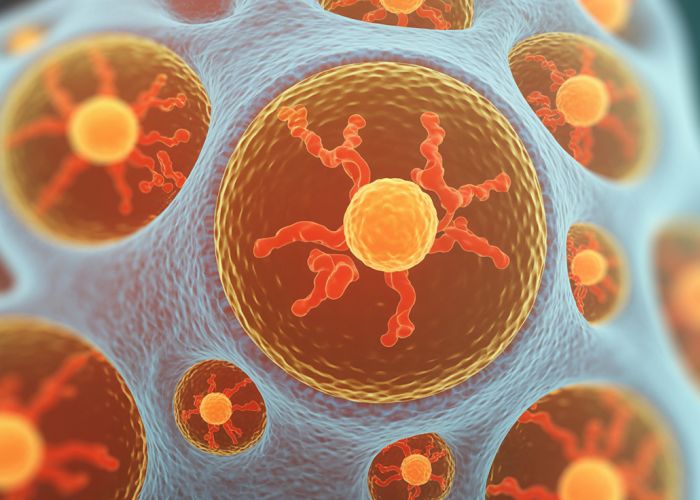Porifera, commonly known as sponges, exhibit remarkable regenerative capabilities, and archaeocytes in sponges are central to this process. These totipotent cells within the sponge mesohyl are crucial for various functions. Cellular differentiation, a process actively studied at institutions like the Marine Biological Laboratory, highlights the archaeocyte’s potential. Furthermore, research using microscopy techniques demonstrates archaeocytes’ capacity to transform into other cell types, contributing to skeletal formation and nutrient transport. Indeed, studies suggest that the unique characteristics of archaeocytes in sponges could provide insights into fundamental biological mechanisms.

Archaeocytes in Sponges: Unveiling Their Role in Health
This article aims to comprehensively explain the function of archaeocytes within sponges, emphasizing their significance for the sponge’s overall health and survival. The layout is structured to provide a clear and understandable explanation, moving from a general introduction to specific roles and potential applications.
Introduction to Sponges and Archaeocytes
This section serves to introduce the reader to the topic.
- What are Sponges? Briefly define sponges as simple multicellular organisms belonging to the phylum Porifera. Mention their sessile nature and filter-feeding mechanism.
- The Cellular Structure of Sponges: Briefly describe the sponge’s body plan, highlighting the presence of different cell types. Include choanocytes (collar cells), pinacocytes (outer layer cells), and, importantly, archaeocytes.
- Introducing Archaeocytes: Define archaeocytes as totipotent cells found within the mesohyl (gelatinous matrix) of sponges. Emphasize their amoeboid nature and crucial role in various physiological processes.
The Multifaceted Roles of Archaeocytes
This section dives deep into the different functions performed by archaeocytes.
1. Digestion and Nutrient Transport
- Explain how archaeocytes participate in intracellular digestion, taking up partially digested food particles from choanocytes.
- Describe their role in transporting nutrients to other cells throughout the sponge’s body. This could be aided by a simple diagram illustrating the nutrient transfer process.
2. Skeletal Element Synthesis
- Explain how archaeocytes differentiate into sclerocytes (cells that secrete spicules) or spongocytes (cells that secrete spongin fibers).
- Illustrate the importance of spicules and spongin for structural support and defense.
-
Use a table to classify different types of spicules based on their chemical composition (e.g., siliceous, calcareous).
Spicule Type Chemical Composition Function Siliceous Silicon Dioxide (SiO2) Structural Support, Defense Calcareous Calcium Carbonate (CaCO3) Structural Support, Defense
3. Waste Removal and Excretion
- Describe how archaeocytes engulf and eliminate cellular waste products from the mesohyl.
- Explain their contribution to the sponge’s excretory processes.
4. Reproduction and Regeneration
- Explain the vital role of archaeocytes in asexual reproduction (e.g., budding, fragmentation, gemmule formation).
- Describe how archaeocytes aggregate and differentiate to form new sponge structures.
- Detail their importance in regeneration after injury.
- Explain how archaeocytes migrate to the site of injury and differentiate into specialized cells to repair damaged tissues.
5. Defense Mechanisms
- Briefly mention the archaeocytes’ contribution to the sponge’s immune defense system. While sponges lack a complex immune system, archaeocytes play a role in phagocytosis of foreign particles and potential pathogens.
- Explain how some archaeocytes can differentiate into collencytes, which secrete collagen to strengthen the mesohyl and resist physical damage.
Archaeocytes and Sponge Health: A Closer Look
This section directly addresses the connection between archaeocytes and sponge well-being.
- Environmental Stress and Archaeocyte Function: Discuss how environmental factors (e.g., temperature changes, pollution, ocean acidification) can impact archaeocyte function. This includes explaining how stressed archaeocytes may be less efficient at performing their essential roles, leading to compromised sponge health.
- Disease Resistance: Explore the role of archaeocytes in the sponge’s ability to resist diseases. Explain how a healthy population of archaeocytes contributes to the sponge’s resilience against pathogens.
- Indicators of Sponge Health: Describe how the abundance, morphology, and activity of archaeocytes can serve as indicators of overall sponge health. Research methods to assess archaeocyte health could be briefly mentioned.
Potential Applications and Future Research
This section explores potential applications tied to archaeocyte biology.
- Biomaterials: Discuss the potential for using sponge-derived materials (e.g., spicules, spongin) in biomedical applications, emphasizing the role of archaeocytes in producing these materials.
- Drug Discovery: Briefly mention the potential for isolating bioactive compounds from sponges, and how archaeocytes, as metabolically active cells, could contribute to the production of these compounds.
-
Future Research Directions: Identify areas for future research focusing on archaeocytes, such as:
- Investigating the signaling pathways that regulate archaeocyte differentiation and function.
- Studying the interactions between archaeocytes and other cell types within the sponge.
- Examining the impact of environmental stressors on archaeocyte health at the molecular level.
FAQs: Archaeocytes and Sponge Health
Here are some frequently asked questions about archaeocytes and their crucial role in sponge health and function.
What exactly are archaeocytes in sponges?
Archaeocytes are versatile, amoeba-like cells found in sponges. They are totipotent, meaning they can transform into other specialized cell types. This ability allows them to participate in various essential processes.
Why are archaeocytes considered important for sponge health?
Archaeocytes play vital roles in nutrient transport, waste removal, and the regeneration of damaged tissues within sponges. They can differentiate into other cell types as needed.
How do archaeocytes contribute to the structural integrity of sponges?
Archaeocytes synthesize structural components like spongin and spicules. These elements provide support and maintain the sponge’s shape, ensuring its survival in its environment.
Can archaeocytes help sponges adapt to changing environments?
Yes, archaeocytes contribute to a sponge’s ability to adapt. Their role in nutrient storage allows sponges to survive periods of starvation, and their regenerative capabilities help them recover from environmental damage.
So, the next time you see a sponge, remember the busy little archaeocytes working hard inside! Hopefully, this peek into the world of archaeocytes in sponges has sparked your curiosity. Keep exploring!